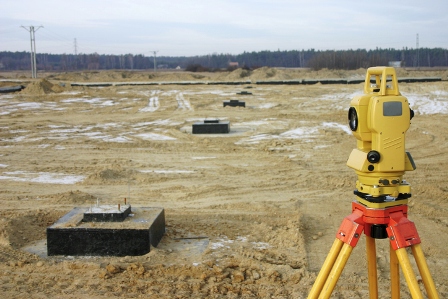Understanding Engineering Surveys and Their Impact on Construction Projects
Understanding Engineering Surveys and Their Impact on Construction Projects
Blog Article
Essential Tools and Techniques in Setting Out Design
The self-control of setting out design depends heavily on a suite of vital tools and techniques that underpin the precision and efficiency of job implementation. What effects does this hold for future engineering methods?
The Importance of Accurate Dimensions

The value of precise dimensions prolongs beyond plain conformity; they are indispensable to the total effectiveness of engineering procedures. Mistakes can result in worldly waste, job delays, and enhanced labor costs, eventually impacting the project's bottom line. Precise measurements enhance the high quality of the final item, making sure that it executes as meant and satisfies the assumptions of stakeholders.
Additionally, the relevance of precise measurements is evident in different engineering disciplines, consisting of civil, mechanical, and electrical engineering. Thus, promoting a culture that focuses on accuracy is essential for the future of design.
Crucial Tools for Setting Out
Establishing out, an essential stage in the engineering and building procedure, relies greatly on details devices that ensure exact place and positioning of structures. Among these devices, the surveyor's degree attracts attention, supplying precise straight measurements crucial for developing recommendation factors. This tool allows engineers to figure out altitude modifications and maintain uniformity throughout the project site.
The overall terminal is an additional important tool, integrating electronic range dimension with angular measurement capacities. This technology boosts effectiveness and precision in recording spatial information, permitting for efficient site layout and planning.
In addition, the use of gauging tapes and marking tools, such as chalk lines or stakes, is basic for briefly noting limits and crucial points on the website. These basic tools, though basic, are vital for making sure clear interaction among the building and construction group regarding job specifications.
Lastly, GPS innovation has acquired traction in setting out procedures, giving real-time placing information and dramatically enhancing accuracy over typical techniques. Jointly, these vital tools create the backbone of effective establishing out practices, ultimately adding to the successful execution of engineering and building projects.
Advanced Surveying Methods
Advanced checking methods play a critical duty in enhancing the precision and performance of engineering projects. These techniques include a series of approaches that supply precise information for layout and building. Conventional approaches, such as leveling and triangulation, have actually developed right into a lot more sophisticated techniques, including Total Terminal studies and Worldwide Navigating Satellite Solution (GNSS)
Overall Terminal devices integrate digital theodolites with distance dimension capabilities, enabling surveyors to gather exact location data with wonderful rate. This technology considerably decreases errors related to manual dimensions and supplies real-time information handling. Additionally, GNSS provides unparalleled accuracy for massive jobs by making use of satellite signals to identify specific positioning, which is important for making certain and straightening frameworks conformity with design requirements.
In enhancement to these tools, advanced strategies likewise include geospatial evaluation and 3D modeling. These techniques allow engineers to imagine terrain and website conditions a lot more properly, assisting in much better decision-making throughout the preparation phase. By utilizing these advanced evaluating techniques, design jobs can attain higher precision in layout, decrease rework, and ultimately enhance general project success.
Digital Technology in Engineering
The combination of electronic technology has transformed design techniques, boosting both efficiency and accuracy across various disciplines. Devices such as Building Information Modeling (BIM) facilitate the visualization and administration of complicated jobs, permitting designers to work together effortlessly and make notified choices. This innovation allows the creation of comprehensive 3D versions, which can be analyzed for structural honesty and performance prior to building starts.

The application of expert system and artificial intelligence in engineering procedures even more boosts anticipating maintenance and optimization of sources. These innovations make it possible for the analysis of substantial information why not check here collections, causing far better forecasting and boosted task outcomes. Generally, digital technology is reshaping the design landscape, driving technology, and guaranteeing that projects are finished with greater performance and minimized threat. As the market remains to advance, embracing these tools will certainly be vital for future success.
Finest Practices for Implementation
When carrying out digital technology in engineering, it is crucial to develop a tactical approach that straightens with job objectives and organizational capabilities. A comprehensive evaluation of existing process and technology facilities is necessary to identify gaps and possibilities for improvement. Involving stakeholders early while doing so promotes collaboration and guarantees that the modern technology satisfies individual demands.

Job managers need to adopt a repetitive implementation technique, permitting modifications based upon real-time comments and efficiency evaluations. This active technique not just reduces dangers however additionally advertises constant improvement by integrating lessons found out.
Conclusion
To conclude, the integration of vital tools and progressed strategies in setting out design is important for guaranteeing accuracy in measurements and effective project implementation. Employing tools such as property surveyor's degrees, complete stations, and GPS technology, alongside contemporary surveying techniques, enhances precision and decreases the likelihood of errors. Embracing finest practices in implementation even more optimizes these procedures, eventually promoting improved task outcomes in the engineering and building industries.
The self-control of setting out design counts heavily on a collection of vital tools and techniques that underpin the accuracy and effectiveness of job implementation.Additionally, the value of exact measurements is noticeable in different engineering disciplines, including civil, mechanical, and electric engineering. By employing these innovative evaluating methods, design tasks can achieve better precision in format, reduce rework, and ultimately enhance total job success.
Generally, digital innovation is improving the engineering landscape, driving advancement, and guaranteeing that jobs are completed with higher effectiveness and decreased risk (setting out engineering).In verdict, the assimilation of vital devices and progressed strategies in establishing out design is important for making sure precision in dimensions and my website successful task execution
Report this page